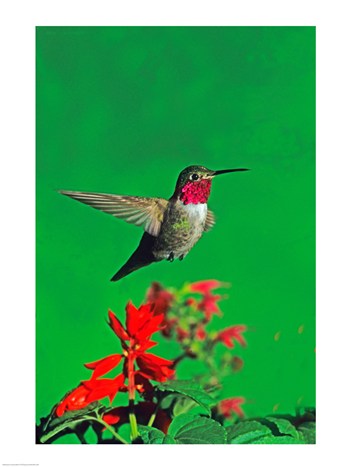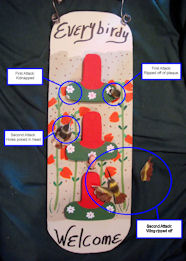Hummingbird Behavior
Hummingbird behavior is quite comical. Why do hummingbirds do what they do? They don’t always like to say, but hopefully that questions can be answered here.
Society
Hummingbirds are not very social at all and live very solitary lives, only coming together to mate or grudging share a hummingbird feeder. You will not see a hummingbird flock or migrate in groups. They may swarm a hummingbird feeder to grab a quick snack on their way through town, but they don’t fly together. They just like to do their own thing.
Hummingbirds divide themselves by territories. Male hummingbirds will aggressively protect their territories. Each territory is chosen based on the abundance of food, nectar, and water. Many male hummingbirds’ territories are about the size of a quarter acre. Females will define their territories by the nests they build. Both male and female hummingbirds fiercely protect these areas.
Aggression
Male hummingbirds are very aggressive. They set up their territory and will chase off any male that comes near. This helps the male hummingbirds eliminate the competition for the female hummingbirds in the area. This aggression also helps the female hummingbirds. Female hummingbirds do not let male hummingbirds near a nest because the male hummingbird’s bright colors might alert predators in the area to the nests location. If there is only one male hummingbird in the area, the female will only have to worry about chasing away one male hummingbird and be able to better concentrate on her Male hummingbirds will also attack a female hummingbird that enters his territory that he has not mated with. Until she mates with him, the male will continually attempt to chase her away. After the female mates with him, she will be allowed to roam his territory without much of a worry.
When hummingbirds fight, they puff themselves up to look as large as possible. They will spread their wings and tail feathers out as large as possible, and they will use their beaks and claws as weapons. They will chirp warnings as they head toward each other. Hummingbirds have been known to body slam each other in mid air and even lock their bills together while spinning in a circle until they hit the ground.
Male hummingbirds have been known to be so territorially aggressive that they have attacked fake hummingbirds.![]() A family member sent us this beautiful “Everybirdy Welcome” plaque (see image to the right). We loved it and put it out by the front door between three hummingbird feeders. Two days later, we noticed that one of the fake hummingbirds
A family member sent us this beautiful “Everybirdy Welcome” plaque (see image to the right). We loved it and put it out by the front door between three hummingbird feeders. Two days later, we noticed that one of the fake hummingbirds![]() had fallen off, and another had completely disappeared. Thinking the warm weather had melted the glue, we put the fallen off hummingbird back on, and put the plaque back up. Two more days later, we noticed that one of the fake hummingbirds
had fallen off, and another had completely disappeared. Thinking the warm weather had melted the glue, we put the fallen off hummingbird back on, and put the plaque back up. Two more days later, we noticed that one of the fake hummingbirds![]() had little holes pecked into his head and another had completely lost his wing. Needless to say, the plaque now hangs up inside.
had little holes pecked into his head and another had completely lost his wing. Needless to say, the plaque now hangs up inside.
Aggressive hummingbirds have been known to injure each other on occasion; however, this is very rare. Usually when they fight, they will only lose a feather or two. By the end of mating season, they may look like they have been through a war. This is just part of being a hummingbird and participating in the hummingbird wars.
To avoid hummingbirds from causing too much injury, put out a lot of hummingbird feeders either spaced far apart or all bunched together. This will help prevent one hummingbird from guarding them all and chasing off the other hummingbirds. Don’t bother to try and stop them from fighting. It’s best to just leave them alone and let them work it out. We have a rule on the top deck of the World of Hummingbirds: Hummingbird Farm of “no body-slamming”. Whenever the hummingbirds start to body-slam each other, we yell, “Hey”. They seemed to have learned the rule pretty well and now they just do it when they think no one is looking.
Hummingbirds do not attack humans, they are just curious to see if you have any food. Hummingbirds will get very close to people as they know they can fly off pretty quick. They have been known on many occasions to get right in a person’s face, chirping and demanding the person hurry up and refill that feeder. But no matter how brave they are, they just don’t have the body weight to do damage to another human being.
Mating
To tell the females in his territory that he is ready to breed, a male hummingbird will puff out his chest and throat to show his beautiful feathers and then toss his head from side to side so the feathers will flash in the light. When hummingbirds do this, the hummingbirds will kind of look like they are dancing to a song in their head.
Male Hummingbirds (and several other types or species) will do a little mating dance for the female hummingbirds in an attempt to attract their attention. The male hummingbird will fly down right in front of a perching female hummingbird. His tail is outstretched and body stretched out so that the female can see every part of him. He will then fly rapidly back and forth in front of the female to so how strong and in control he is. Females have also been known to do this dance on occasion.
Another way a male hummingbird will show a female hummingbird his wonderfulness is by performing what is called a courtship dive. This is when a male hummingbird will fly about sixty (60) feet into the air and then turn right around and dive as fast as possible toward the ground. While diving downward the hummingbird will make buzzing, popping, and even whistling sounds. When he get to about one (1) to two (2) inches just above of where the female hummingbird he is perusing is, he will arc his flight straight up in the air to about sixty (60) feet above ground, and do it again. He will do this about three (3) or four (4) times, hoping to get the attention of his future lady friend, or any other females in the area. It also will tell other male hummingbirds in the area that this space is his.
Hummingbirds will also use this technique to chase a bird of prey like a blue-jay, crow, or even a hawk. Other hummingbirds (and sometimes other types of birds) will join in the attack until the offending bird gets sick of the dive bomb runs and goes away.
When female hummingbirds are ready to mate and have accepted a partner, the female will perch on a branch while spreading out her tail feathers and a sly look in her eye. When she does this, the male knows she is ready and the mating will begin.
Some types or species of male hummingbirds will form what is known as a lek. A lek is when a bunch of male hummingbird will get together (as many as 100 of them) and sing for the females. If a female hummingbird seems interested in one of the males, he will dance for her. If the female hummingbird likes the male hummingbirds dance they will mate.
Mating will only last for about four (4) seconds. Afterwards, both the male and female hummingbirds leave each other to pursue other interests. The female will build a nest and raise the young, while the male will start to look for another female.
Grooming
Hummingbirds are very clean and will groom themselves quite often. They use their bills and claws to preen themselves. On the back of their body near their tail, they have an oil gland. They use this oil to cover their wings to help keep them clean. In places they have problems reaching, they will rub against a twig to clean themselves and spread the oils. They will also use a twig to clean off any pollen and debris off of the bill. When they do this they use a back and forth motion with their beak rubbing on the branch, like sharpening a knife on a knife sharpener.
Hummingbirds like baths. They will fly through misting water, play in a shallow birdbath or fountain, or rub themselves against wet leaves after a rain. They like to flutter their wings and tail in the water while splashing the water all over their body, or fly though the falling water droplets to get as soaking wet as possible.
After their bath, a hummingbird will carefully preen every last feather until they are dry. Many times after a water bath, the hummingbird will take a sun-bath. They point their faces toward the sun and puff themselves up into a ball. Then they will stretch out their necks, tail feathers, and wings to soak up as much sun as possible. When watching them, it looks like they are trying to charge their little solar cells (of course hummingbirds don’t have solar cells, it is just the best way to describe their behavior.)
Intelligence
Hummingbirds are extremely smart. A hummingbird’s brain is larger in comparison to body size than any other bird. They have a terrific memory. They know every flower in their territory and how long it will take each flower to refill. Hummingbirds remember year to year, where each and every hummingbird feeder is, both at home and along a migration path. Female hummingbirds have been observed watching older female hummingbirds building a nest to learn some tricks and tips (and possibly steal some material). They also learn which people are the ones responsible for filling hummingbird feeders, and which ones don’t. These are just smart little birds.
There have been some really good studies out about how smart hummingbirds are. Click on this link to hear a radio interview done by Quirks & Quarks on CBC Radio with Dr. Andrew Hurly of the University of Lethbridge on how hummingbirds use time management in their travels.

As you can see, hummingbird behavior can be very fun to watch. If you have a story about how your hummingbirds behave or a fun hummingbird behavior, please send it to us as a story and we can add it to the Story section.






